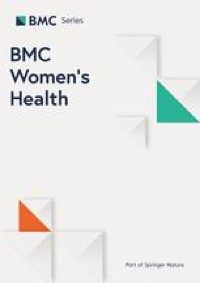
Khan JR, Biswas RK, Sheikh MT, Huq M. Factors associated with the availability of iodized salt at household level: a case study in Bangladesh. Public Health Nutr. 2019;22(10):1815–23.
World Health organization (WHO)., Elimination of Iodine Deficiency disorders: a manual for health workers, Nutrition, Editor 2008, WHO: Geneva Swizerland.
Deaken, University. Approimate iodine content of various foods in Australia. better health.vic.gov.au., 2019, Deakin University: state of Victoria. p. 1–4.
World Health Organization., Assessment of iodine deficiency disorders and monitoring their elimination: a guide for programme managers. 2007.
Strange B, Joseph M, Kaushik S, Dey S, Dutt S, et al. Reaching the rural poor in India with iodized salt: the micronutrient initiative’s iodized salt coverage study 2010. IDD News Letter. 2011;39:6–8.
Harika R, Faber M, Samuel F, Mulugeta A, Kimiywe J, et al. Are low intakes and deficiencies in Iron, vitamin A, zinc, and iodine of Public Health concern in ethiopian, kenyan, nigerian, and south african children and adolescents? Food & Nutrition Bulletin. 2017;38(3):405–27.
Hernández M, Wilson KL, Combet E, Wardlaw JM. Brain findings associated with iodine deficiency identified by magnetic resonance methods: a systematic review. Open J Radiol. 2013;3(4):180–95.
Gorstein JL, pearce EN, Kupka R, Zimmermann MB. Estimating the health and economic benefits of universal salt iodization programsto correct iodine deficiency disorders. 2020. 30(12): p. 1802–9.
Asfaw A, Belachew T. Magnitude of iodine defiiency disorders and associated factors in Dawro Zone, Southwest Ethiopia; the hiddden hunger: a community based cross-sectional study. BMC Nutr. 2020;6(1):1–10.
Obssie GF, Ketema K, Tekalegn Y. Availability of Adequately Iodized Dietary Salt and Associated Factors in a Town of Southeast Ethiopia: A Community-Based Cross-Sectional Survey. Journal of Nutrition and Metabolism, 2020. 2020.
Mekonnen TC, Eshete S, Wasihun Y, Arefaynie M, Cherie N. Availability of adequately iodized salt at household level in Dessie and Combolcha Towns, South Wollo, Ethiopia. BMC Public Health. 2018;18(1):1–9.
Zimmermann MB, Moretti D, Chaouki N, Torresani T. Introduction of iodized salt to severely iodine-deficient children does not provoke thyroid autoimmunity: a one-year prospective trial in northern Morocco. Thyroid. 2003;13(2):199–203.
Jooste PL, Weight MJ, Lombard CJ. Iodine concentration in household salt in South Africa. Bull World Health Organ. 2001;79:534–40.
Hawas S, Lemma S, Mengesha S, Demissie H, Segni M. Proper utilization of adequatly iodized salt at house hold level and associated factores in Asella Town Arsi Zone Ethiopia: a community based cross sectional study. J Food Process Technol. 2016;7(4):573.
Harika R, Faber M, Samuel F, Kimiywe J, Mulugeta A et al. Micronutrient Status and Dietary Intake of Iron, vitamin A, iodine, Folate and Zinc in Women of Reproductive Age and pregnant women in Ethiopia, Kenya, Nigeria and South Africa: a systematic review of data from 2005 to 2015. Nutrients, 2017. 9(1096).
Ivanova L. Iodine deficiency disorders and salt iodisation: public health implications. J Nutr Health Food Eng. 2015;2(1):1–2.
Girma M, Loha E, Bogale A, Teyikie N, Abuye C, et al. Iodine deficiency in primary school children and knowledge of iodine deficiency and iodized salt among caretakers in Hawassa Town: Southern Ethiopia. Ethiop J Health Dev. 2012;26(1):30–5.
Fisher J, Tran T, Biggs B, Tran T, Dwyer T, et al. Iodine status in late pregnancy and psychosocial determinants of iodized salt use in rural northern Viet Nam. Bull World Health Organ. 2011;89:813–20.
Rawal SV, Kedia G. A prevalence study of iodine deficiency disorder in children of primary schools in Gandhinagar district. Natl J Community Med. 2011;2(3):478–82.
Kibatu G, Nibret E, Gedefaw M. The status of iodine nutrition and iodine deficiency disorders among school children in Metekel zone, Northwest Ethiopia. Ethiop J Health Sci. 2014;24(2):109–16.
Ethiopian Public Health Institute (EPHI)., Ethiopian National Micronutrient Survey Report, Nutrition, Editor 2016, Miistry of Health (MOH),: Addis Ababa, Ethiopia. p. 9–13.
World Health organization., Urinary Iodine concentration for determining iodine status in populations, V.a.M.N.i.s. (VMNIS), Editor 2013, WHO: Geneva, Switherland. p. 1–5.
World Health Organization (WHO). Urinary iodine concentrations for determining iodine status in populations. World Health Organizations; 2013.
Gidey B, Alemu K, Atnafu A, Kifle M, Tefera Y, et al. Availability of adequate iodized salt at household level and associated factors in rural communities in Laelay Maychew District, Northern Ethiopia: a cross sectional study. J Nutr Health Sci. 2015;2(1):1.
Abebe Z, Tariku A, Gebeye E. Availability of adequately iodized in Northwest Ethiopia: a cross-sectional study. Archives of Public Health. 2017;75(1):1–9.
Aweke K, Adamu B, Girmay A, Yohannes T, Alemnesh Z, et al. Iodine deficiency disorders (IDD) in Burie and Womberma districts, west Gojjam, Ethiopia. African journal of food. Agric Nutr Dev. 2014;14(4):9167–80.
Tariku WB, Mazengia AL. Knowledge and utilization of iodized salt and its associated factors at household level in Mecha District, Northwest Ethiopia. Journal of nutrition and metabolism, 2019. 2019.
Ajema D, Bekele M, Yihune M, Tadesse H, Gebremichael G, et al. Socio-demographic correlates of availability of adequate iodine in household salt: a community-based cross-sectional study. BMC Res Notes. 2020;13(1):1–6.
Abeywickrama HM, Koyama Y, Uchiyama M, Shimizu U, Iwasa Y, et al. Micronutrient status in Sri Lanka: a review. Nutrients. 2018;10(11):1583.
Gebretsadikan TM, Troen AM. Progress and challenges in eliminating iodine deficiency in Ethiopia: a systematic review. BMC Nutr. 2016;2(1):1–12.
ENMSR, Remarkable progress against iodine deficiency in Ethiopia. 2016: p. 8–9.
Anderson S, Karmisholt J, Pederesen KM, Laurberg P. Reliability f studies of iodine intake and recommendations for number of samples in goups ad in individuals. Br J Nutr, 2008. 99(4).
O’Kane SM, Pourshahidi LK, Farren KM, Mulhern MS, Strain J, et al. Iodine knowledge is positively associated with dietary iodine intake among women of childbearing age in the UK and Ireland. Br J Nutr. 2016;116(10):1728–35.
Buxton C, Baguune B. Knowledge and practices of people in Bia District, Ghana, with regard to iodine deficiency disorders and intake of iodized salt. Archives of Public Health. 2012;70(1):1–9.
World Health Organization (WHO) and International Council for Control of Iodine Deficiency Disorders. Indicators for assessing iodine deficiency disorders and their control through salt iodization. World Health Organization; 1994.
Dinka AW, Kebebe T, Nega G. Iodine level of Salt and Associated factors at Household Level in Gidami District, Oromia Region, Ethiopia: a cross-sectional study. Nutr Diet Supplements. 2021;13:9–16.
Rutstein SO. Steps to constructing the new DHS Wealth Index, DHS, Editor 2016, DHS. p. 1–20.
Belachew T. Principal component Analysis and factor analysis: The practice, 2015: Jimma University. p. 2–87.
Zhang Z. A principal component analysis using SPSS for multi-objective decision location allocation problem. WSEAS Trans Computers. 2015;14:698–76.
Laerd statistics. Principal Components Analysis (PCA) using SPSS Statistics. 2019 [cited 2019 12/02]; Available from: https://statistics.laerd.com/spss-tutorials/principal-components-analysis-pca-using-spss-statistics.php.
Hosmer DW Jr, Lemeshow S, Sturdivant RX. Applied logistic regression. Volume 398. John Wiley & Sons; 2013.
Paul P, Pennell ML. Standardizing the power of the Hosmer-Lemeshow goodness of fit test in large data sets. Stat Med. 2013;32(1):67–80.
Vtcheva KP, Lee M, McCormick JB, Rahbar MH. Multicollinearity in regression analyses conducted in epidemiologic studies. Epidemiology. Volume 6. Sunnyvale, Calif.),; 2016. pp. 2–8. 2.
Gashu D, Stoecker BJ, Bougma K, Adish A, Haki GD, et al. Association of serum selenium with thyroxin in severely iodine-deficient young children from the Amhara region of Ethiopia. Eur J Clin Nutr. 2016;70(8):929–34.
Belay A, Gashu D, Joy EJM, Lark RM, Chagumaira C et al. Zinc deficiency is highly prevalent and spatially dependent over short distances in Ethiopia. 2021: p. 1–8.
Xiao Y, Sun H, Li C, Li Y, Peng S, et al. Effect of iodine nutrition on pregnancy outcomes in an iodine-sufficient area in China. Biol Trace Elem Res. 2018;182(2):231–7.
Appiah PK, Yanbom CT, Ayanore MA, Bapula A. Iodine content of salt use after years of universal iodization policy and knowledge on iodized salt among households in the Sissala East Municipality in Upper West Region of Ghana. Journal of Food Quality, 2020. 2020.
Abebaw B, Oumer A. Determinants of iodine deficiency among school age children in Guraghe Zone, Southwest Ethiopia. Int J Public Health. 2020;9(2):90–6.
Harding KL, Aguayo VM, Masters WA, Webb P. Education and micronutrient deficiencies: an ecological study exploring interactions between women’s schooling and children’s micronutrient status. BMC Public Health. 2018;18(1):1–13.
Samson L, Hircsu I, Katko M, et al. Lower educational status interferes with maternal iodine intake during both pregnancy and lactation. Endocr Connections. 2021;10(7):742–9.
Roy R, Chaturvedi M, Agrawal D, Ali H. Household use of iodized salt in rural area. J family Med Prim care. 2016;5(1):77.
Jacky K, Greg MG, Jonathan SG, Roland K, Ruth S, et al. Household coverage with adequately iodized salt varies greatly between countries and by residence type and socioeconomic status within countries: results from 10 national coverage surveys. J Nutr. 2017;147(5):1004S–14S.
Central Statistical Agency of Ethiopia (CSA)., Mini Ethiopia Demographic and Health Survey, in Ethiopia demographic and Health Survey, ICF, Editor 2019, Central Statistical Agency: Addis Ababa, Ethiopia.




